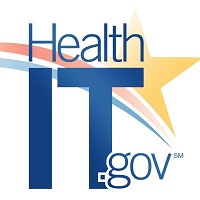 By Brett Andriesen and Holly Miller, ONC
By Brett Andriesen and Holly Miller, ONC
Twitter: @ONC_HealthIT
Transitions of care (e.g. from a nursing home to an emergency department) are often difficult, but are even more dangerous for the patient and healthcare providers as a result of the COVID-19 pandemic. ONC is working with private-sector innovators to find unique and rapid ways to help move patients from the hospital to the nursing home, or vice versa.
The 360X project was formed by ONC to define implementation guidance that enables health IT interoperability in support of patient transitions of care. 360X is a series of Integrating the Health Care Enterprise (IHE) International profiles that leverage readily available technology standards to manage patient care transitions. To date the project has IHE-balloted profiles for two transitions of care use cases: ambulatory referrals and acute/ambulatory transfers to skilled nursing facilities.
As new 360X use cases were considered by the 360X group this past year, the group agreed to focus on those transitions of care most critically needed due to the pandemic. The group also wanted to identify use cases that could be quickly deployed following the IHE ballot process, and would have significant impact on those most affected by the pandemic. Focusing on patients in nursing homes and those with social needs affecting their health, including the many unemployed as a result of the pandemic, the group zeroed in on these new use cases:
- Transfers from skilled nursing facilities to acute emergency departments where critical information from the sender’s to the recipient’s health IT system is key to caring for the patient and protecting the clinical staff.
- Social determinants of health (SDOH) needs-based referrals; closing the referral loop with social care entities, ensuring that the patient’s needs such as transportation and nutrition have been met, all as part of the clinical staffs’ health IT-based workflow.
The 360X group wants to identify and complete balloting for these protocols this year for rapid deployment. The group has also been closely aligned with existing work by the HL7 Gravity Project in the SDOH space, focusing on identifying coded data elements and associated value sets to represent SDOH screening, diagnosis, planning, and interventions in health IT systems.
As one of the founding members of the Direct Project workgroup, MedAllies helped develop the Direct messaging protocols, as a “simple, secure, scalable, standards-based way for participants to send authenticated, encrypted health information directly to known and trusted participants over the internet,” according to MedAllies’ Holly Miller, MD. One of the key goals is to ensure orders and messages are tracked to completion, “closing the clinical care loop” and ensuring that patients have received the care they require.
To learn more about SDOH, the 360X and Gravity projects or to get involved in recurring workgroup meetings, visit the 360X Project wiki page.
This article was originally published on the Health IT Buzz and is syndicated here with permission.
